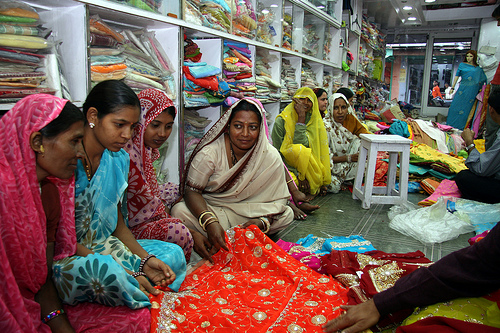Certain expenses follow us through our entire lives, never letting up as we advance in age. While homes and other big-ticket buys might be one time purchases, basics like food and clothing are repetitive expenses, which only grow higher as we move through life. In order to enable you to make these purchases, you may wish to consider help from a payday loan.
While it is important to save money on big buys like cars and homes, there are incremental savings opportunities available, too, trimming budgets over time as savings accumulate. To live a frugal life, build-in savings on those things you buy over and over; like clothes.
Clothing expenses quickly spiral out of control when spending is not managed properly. For one, it’s fun for some folks to go out and shop, adding entertainment value to clothing purchases. And each buy is tied to vanity as well, prompting overspending just to make ourselves look as good as possible.


“You’ll save money with these fashionable clothes”. Clothing shop by Travel Aficionado, on Flickr. This work is licensed under a Creative Commons Attribution-NonCommercial 4.0 International License.
Despite the fact that you’ll be buying clothes for the rest of your life, the experience doesn’t need to break your budget again and again. Follow some simple rules for keeping clothes spending in check, and you’ll stay on track financially, without missing a beat on the fashion front.
Don’t Be a Trend Setter
Embracing flash in the pan fashions is fun, especially for the younger set able to pull-off cutting edge couture, without looking like a wannabe. But saving money on clothes, in the long run, is based on establishing a sensible wardrobe, from which many attractive combinations emerge.
For proof that basics are money well-spent, tour your current closet contents for a look at all the distinct passing fashion items you purchased, but have not worn for years. On the other hand, that little black dress or sensible skirt are well-seasoned from all the wear and tear.
Staples transcend trends, so they are prudent investments when clothing cash is light. Neutral shades outperform flashy colors, versatility-wise, allowing savvy fashionistas to create endless combinations from a core selection of flexible garments. To change up your look, accessorize creatively, using baubles to create accent that distinguish outfits comprised of basic wardrobe staples.
Depending on where you stand budget-wise, trimming your wardrobe expectations might be required for savings. Designer labels, for example, skew clothing costs higher, without providing major benefits over their lower-profile counterparts. Sure, designer clothes are well made, but so are some suitable stand-ins provided at a fraction of the fee. Everyone finds their own comfort zone, which starts with a realistic view of what each can afford.
Don’t get in over your head just for the sake of designer labels in your closet. Instead, adopt a fundamentalist approach, splurging on big name pieces occasionally, when funding permits.
Pre-owned and Vintage Clothes Furnish Savings
Pre-owned boutiques specialize in selling lightly used clothes, which are priced at a fraction of their original retail prices. When brand-new is out of reach, consider the used market, which offers opportunities at all levels. Individual, person to person sales are becoming more popular, as individuals with shared tastes swap and sell clothing, and even neighborhood thrift sales produces a bargain here and there, for used clothes shoppers.
Trading in your own gently used garments lets you build-up credit at resale shops, to offset the cost of used items you buy there. In the end, you are saving on buys and taking home payments from clothes you no longer need, so it is a winning situation.
Off Season Deals on Clothes
Perhaps the most basic money saving strategy for clothes shoppers is to always make purchases opposite the season when clothes will be worn. Sweaters cost more when it is cold out, so buy them in summer when there is virtually no demand for warm clothes. The simple supply and demand principle leads to off-season savings every few months.
